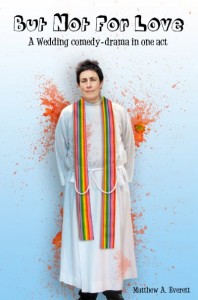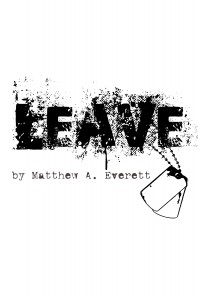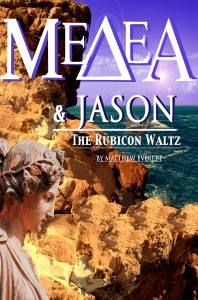PART IV: HOW? DETERMINING THE TOOLS.
“When an artist of talent makes a painting or a sculpture, he is always aware of the potentials and limitations of his materials; the better the artist, the more likely he is to know just what he can and cannot do with them.”
~Bruce Cole, Art Scholar and Senior Fellow at the Hudson Institute
Just as talented artists understand the potentials and limitations of the tools of their craft, talented estate planning attorneys understand how to tailor various estate planning tools to best serve each client’s specific needs. Below is a list of the most common estate planning tools that artist clients can use to help address the needs of their estates. A brief description has been provided detailing what each tool is, why it is important, and how it might be used in addressing the special assets of artist clients.
The Will.
 The Will is the most basic estate planning tool for both the non-artist and artist client. In fact, many people assume the terms “estate planning” and “will” are synonymous. Where “estate planning” refers to the overall process of putting the planning documents together, the Will is the foundational document of the planning process. The Will is the document in which the artist client can, among other things, designate Beneficiaries who will inherit assets from the estate, nominate the Personal Representative(s) who will administer the estate during the probate process, and nominate the Guardian(s) for any minor children. Additionally, the Will may be used to create Trusts.
The Will is the most basic estate planning tool for both the non-artist and artist client. In fact, many people assume the terms “estate planning” and “will” are synonymous. Where “estate planning” refers to the overall process of putting the planning documents together, the Will is the foundational document of the planning process. The Will is the document in which the artist client can, among other things, designate Beneficiaries who will inherit assets from the estate, nominate the Personal Representative(s) who will administer the estate during the probate process, and nominate the Guardian(s) for any minor children. Additionally, the Will may be used to create Trusts.
At the very least, artists should have a Will in place to ensure that their artistic assets go to an appropriate beneficiaries and that a suitable Personal Representative has been nominated. The Will is often sufficient for amateur artists, for artists who have relatively few artistic assets, or for artists who have achieved only a small level of financial success. Further, artist clients who feel confident that their Beneficiaries and Personal Representative(s) can adequately manage their assets may not need to exercise further control over their assets.
The Trust.
The Trust is an entity created to hold, preserve, and manage assets for its Beneficiaries. There are many different types of Trusts. An estate planning attorney will be able to determine which type of Trust is best suited for the assets being transferred and the goals of the Grantor creating the Trust. Trusts are often created for assets that would normally pass to minor children or beneficiaries who are incapable of responsibly managing the assets they inherit.
 Similarly, an artist client can place artistic assets into a Trust created with very specific rules dictating how artwork should be managed and used. The artist client will nominate a Trustee or team of Trustees to manage the Trust’s assets. The Trustee has a duty to manage the assets for the best interests of the Beneficiaries of the Trust pursuant to the rules the artist client has included in the Trust document.
Similarly, an artist client can place artistic assets into a Trust created with very specific rules dictating how artwork should be managed and used. The artist client will nominate a Trustee or team of Trustees to manage the Trust’s assets. The Trustee has a duty to manage the assets for the best interests of the Beneficiaries of the Trust pursuant to the rules the artist client has included in the Trust document.
The Trust document can be created before death by putting assets into it. A Trust can also be created after death if dictated in the Will. The Trust document contains the limitations and permitted uses of the Trust’s assets. Accordingly, the Trust document can be a powerful tool for artists who wish to maintain a strong level of control over their creative assets after death.
Trusts offer the next level in protection for artist clients. However, artist clients should note that along with this added protection there is also another layer of complexity added to their estate. It is important that the artist client consider the burden the Trust may place on any potential Trustees the artist client nominates. The artist client must therefore weigh any such potential burden against the need and desire for extending control beyond the grave.
The Private Foundation.
 The Private Foundation is a charitable entity created for a specific purpose, like managing the assets of a family for philanthropic purposes or managing and maintaining an artist’s works. Similar to the Trust, the Foundation operates under rules created by the artist client in setting up the organization. However, the Foundation is a complex instrument and has far more governmental, tax, and reporting restrictions. Depending on the complexity of the artist client’s assets, the Foundation Board may even need a staff to help it carry out its duties.
The Private Foundation is a charitable entity created for a specific purpose, like managing the assets of a family for philanthropic purposes or managing and maintaining an artist’s works. Similar to the Trust, the Foundation operates under rules created by the artist client in setting up the organization. However, the Foundation is a complex instrument and has far more governmental, tax, and reporting restrictions. Depending on the complexity of the artist client’s assets, the Foundation Board may even need a staff to help it carry out its duties.
Private Foundations were a popular recommendation to artist clients in the past. The trend now is to use Trusts to address the concerns of artist clients. Trusts tend to be more flexible and less burdensome to the vast majority of artist clients. However, Private Foundations are still often recommended for very financially successful or popular artist client estates and can be used in even small estates where there is a strong philanthropic desire or other compelling need to operate under a more formal structure.
The Artist’s Legacy Statement (Ethical Will).
Ethical Wills are not used as commonly as the Will, Trust, or Foundation. Strictly speaking, an Ethical Will is not a legal document. Further, many attorneys are not versed in drafting the Ethical Will. There are many non-attorney options for drafting a meaningful Ethical Will. However, working with an attorney skilled in crafting Ethical Wills can be a natural choice as the estate planning attorney will already be familiar with the client’s legal needs, family situation, and legacy desires.
 An Ethical Will is a document used to capture the Testator’s vision, values and beliefs and pass those along to his or her heirs. Ethical Wills are used in many different situations. Some people use them to ensure that their descendants understand their strong religious beliefs. Others use them to help give their beneficiaries some context for the designations made in other estate planning documents. As Wills become part of the public record after death, the Ethical Will is often a more appropriate place to include such personal and potentially sensitive information so that it remains private.
An Ethical Will is a document used to capture the Testator’s vision, values and beliefs and pass those along to his or her heirs. Ethical Wills are used in many different situations. Some people use them to ensure that their descendants understand their strong religious beliefs. Others use them to help give their beneficiaries some context for the designations made in other estate planning documents. As Wills become part of the public record after death, the Ethical Will is often a more appropriate place to include such personal and potentially sensitive information so that it remains private.
The Artist’s Legacy Statement is an Ethical Will for artists. It is in this document that the artist client can express their values and beliefs surrounding their body of work. This document can also be used to help an artist’s beneficiaries understand the reasons why limitations may have been placed on the use of any art. The Artist’s Legacy Statement is the perfect document to use with artist clients who express anxieties over their artistic voice being compromised by others after their death. Again, it is not a legally binding document but operates to give guidance to the artist’s family, beneficiaries and others as to the artist’s vision, values and beliefs.
The Artist’s Inventory.
The Artist’s Inventory is an absolute necessity for passing along the artist client’s estate. At its most basic level, the Artist’s Inventory is a list of every piece of work the artist has ever created. Estate planning attorneys always recommend that their clients create a list of important contacts and account information to help those who administer the estate facilitate the probate process more easily and effectively. Artist clients also need to create a complete list of their body of work for the same reason.
In addition to merely listing each piece of work, the artist client should also include as much information about the piece as possible, including such things as materials used to create the work (visual artists), copyrights, trademarks, and/or patents held for each piece, location of the work, and any associations with management, agencies, etc. A new piece of information that I ask for from all of my clients, including my artist clients, is a list of all social media accounts that they hold, including email, websites, Facebook, Twitter, Flickr, etc.
Ultimately, there is a large arsenal of estate planning tools available for the artist client’s estate. It is essential for artist clients to find an estate planning attorney who not only understands the variety of options available, but also is also capable of creating a plan that caters specifically to their artistic needs and legacy desires. Further, the estate planning attorney may need to employ some non-traditional techniques to fully meet their artist clients’ needs.
In Part V of this series, we will explore the different types of assets that may be found in the artist client’s estate.
Photo Credits:
All images are book cover art from the plays of Minnesota playwright and Twin Cities Daily Planet theatre arts writer Matthew Everett.
But Not For Love. Cover art by Minnesota artist Drew Bentley. Production scheduled for October 2012 with The Flowershop Project and Workhouse Theatre Company.
Heaven and Home. Cover art by Minnesota artist James Fish.
Leave. Cover art is by Minnesota director Justin S. Latt.
Medea & Jason: Rubicon Waltz. Cover art by Iowa artist Alexander Bridgeman.
